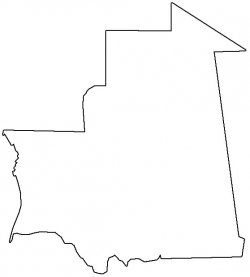
أجهزة الملاحة العربية
Your way to more knowledge
Product successfully added to your shopping cart
Quantity
Total
There are 0 items in your cart.
There is 1 item in your cart.
Total products
Total shipping
To be determined
Total
- Countries of the World
- Zip code in Jordan
- List of surahs in the Holy Qur'an
- All flags of the countries of the world
- Traffic signs in Jordan
- Population of world countries by country
- List of world capitals
- Car Brand Logos and Names
- International Calling Codes
- List of currencies of the world
- Country flags of the world with images and names
- Country codes names
- List of countries and dependencies by area
- Al-Quran Recitations mp3
- List of countries and dependencies by population
- World time zones by country
Mauritania
Official name: Islamic Republic of Mauritania
Also known as: الجمهورية الإسلامية الموريتانية (Arabic), al-Jumhūriyyah al-Islāmiyyah al-Mūrītāniyyah, Islamic Arab and African Republic of Mauritania
Capital of Mauritania: Nouakchott
Area of Mauritania: 1,030,700 km² (397,955 mi²) (29th)
Population of Mauritania: 5,169,395 (126th) - (2024 est.)
Location: Northwestern Africa
Languages of Mauritania: Arabic, French, other local languages
Religions of Mauritania: Sunni Islam (official)
Currency: Ouguiya (MRU)
Calling code: (+222)Area of Mauritania: 1,030,700 km² (397,955 mi²) (29th)
Population of Mauritania: 5,169,395 (126th) - (2024 est.)
Location: Northwestern Africa
Languages of Mauritania: Arabic, French, other local languages
Religions of Mauritania: Sunni Islam (official)
Organizations: United Nations
Border countries (4): Algeria 460 km (285 mi), Mali 2,236 km (1,389 mi), Morocco 1,564 km (971 mi), Senegal 742 km (461 mi).
Coastline: 754 km (469 mi; 407 nmi)
Maritime boundaries: Atlantic Ocean
Mauritaniais divided into (15) regions (wilayas, singular - wilaya):
Adrar, Assaba, Brakna, Dakhlet Nouadhibou, Gorgol, Guidimaka, Hodh ech Chargui, Hodh El Gharbi, Inchiri, Nouakchott Nord, Nouakchott Ouest, Nouakchott Sud, Tagant, Tiris Zemmour, Trarza.
Cities, towns, and villages
- Nouakchott (Arabic: نواكشوط) — is the capital and largest city of Mauritania. Located in the southwestern part of the country, it is one of the largest cities in the Sahara. The city also serves as the hub of the Mauritanian economy. It is home to a deepwater port and Nouakchott–Oumtounsy International Airport, one of the country's two international airports. It also hosts the University of Nouakchott and several other more specialized institutions of higher learning.
- Atar (Arabic: أطار, Berber for mountain) — is a town in northwestern Mauritania, the capital of the Adrar Region and the main settlement on the Adrar Plateau. Situated on the Oued Seguellil, it is home to an airport, a museum and a historic mosque, constructed in 1674.
- Chinguetti (Arabic: شنقيط) – a UNESCO World Heritage Site and home of the Chinguetti Mosque.
Founded in the 13th century as the center of several trans-Saharan trade routes, this small city continues to attract a handful of visitors who admire its spare architecture, scenery, and ancient libraries. The city is seriously threatened by the encroaching desert; high sand dunes mark the western boundary and several houses have been abandoned to the sand.
The town is split in two by a wadi. On one side, there is the old sector, and on the other the new one. The indigenous Saharan architecture of older sectors of the city features houses constructed of reddish dry-stone and mud-brick techniques, with flat roofs timbered from palms. Many of the older houses feature hand-hewn doors cut from massive ancient acacia trees, which have long disappeared from the surrounding area. Many homes include courtyards or patios that crowd along narrow streets leading to the central mosque. - Nouadhibou (Arabic: نواذيبو) – is the second largest city in Mauritania and serves as a major commercial center. It is situated on a 65-kilometre peninsula or headland called Ras Nouadhibou, Cap Blanc, or Cabo Blanco, of which the western side has the city of La Güera. Nouadhibou is consequently located merely a couple of kilometers from the border between Mauritania and Western Sahara.
Nouadhibou is a major hotspot for migrant smuggling, serving as a key departure point for those attempting to reach Europe. - Tichit, or Tichitt (Berber languages: Ticit, Arabic: تيشيت) — is a town for explorers and romantics. Built on the high plains of eastern Mauritania, the town is a major trading centre of salt, and it is this commodity that has been drawing traders across the desert with camel caravans for almost a thousand years. Tichit was also the site of the former Koranic school, and although this has declined, the town has been left with a heritage of ornate mosques that spectacularly punctuate the otherwise barren and sand coloured landscape.
The medieval trading settlement at Tichit is a UNESCO World Heritage Site. Settlements of communities from around 2000 BC are nearby. These are the oldest surviving archaeological settlements in West Africa and the oldest of all stone base settlements south of the Sahara.
Natural resources: iron ore, gypsum, copper, phosphate, diamonds, gold, oil, fish.

